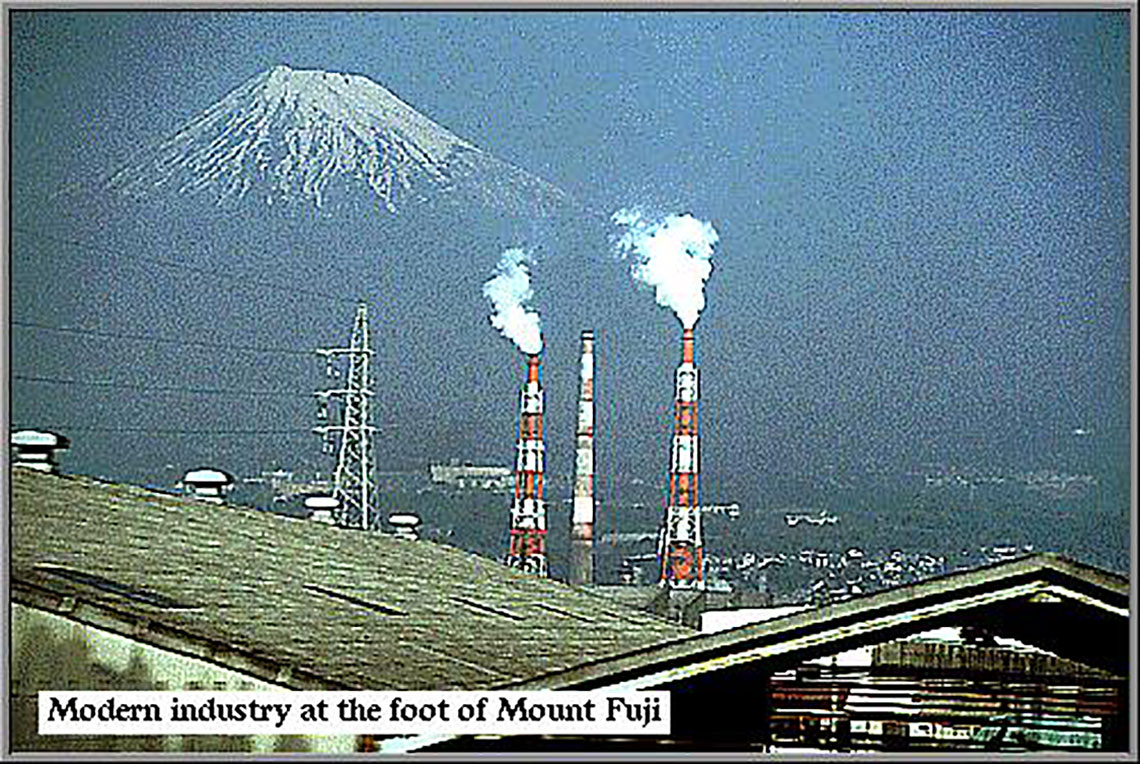
Mt. Fuji or Fujisan (not Fujiyama which is a misreading of the final character that means mountain) has become a well-known symbol of Japan to foreigners and a point of natural beauty of great pride to the Japanese. Wood block-print artists like Hiroshige did much to popularize the mountain through their works and in the 1890s, Japanese naturalism made much of Japan’s natural beauty as a source of inspiration, nationalism, and Japan’s unique superiority over the outside world. It continues to be a model for painters and photographers as well as a startling view for travelers in trains and planes bustling along the eastern seaboard transportation corridor.

Geologically, Fujisan is one of the largest and most extensive volcanoes, stretching some 12, 385 feet (3,776 meters) high with lava flows spreading out broadly. The mountain is actually composed not of one volcano, but three. Shin Fuji (or new Fuji) has simply spread out and covered up most of the remains of its predecessors. The volcano is located along the Fuji Volcanic Zone which stretches away south to the Mariana Islands in the Pacific through Izu Peninsula and the Izu islands and north into volcanic mountain ranges in Nagano and Niigata prefectures. The slopes of Fujisan are nearly regular and appear unique because it stands well clear of any other mountain or volcano. The crater at the top drops some 250 meters. Fujisan is considered active although its most recent eruption was in 1707. Since the volcano is only 100 kilometers from Tokyo, a careful watch is kept. The slopes and upper piedmont of Fujisan have no streams and few springs, so they were not developed until recently. Now, some use is being made of the area, but military maneuvers continue to be a primary one. Lakes to the northeast are being developed as tourist resorts complete with villas and golf courses.
Because it is a natural wonder, Fujisan is also an important religious center. A combined Shinto and Buddhist sect (Fujiko) popularized pilgrimages to the volcano. Good pilgrims not only climbed to the top, but made a circuit of the eight ‘peaks’ at the top. The ascent is divided into ten stations which provide shelter, food and rest. At the fifth station, the pilgrim can also walk around the mountain, a separate pilgrimage. Today, the ascent is more popular as a hiking activity, but pilgrims still make the trip. Both hikers and pilgrims make sure to pick up a ‘Fuji walking stick’ which is soon festooned with wood-burns marking each station and its elevation, protective amulets and other commemorative items. The official hiking season is July 1 to August 26; the rest of the year the weather becomes unpredictable and dangerous.
Throughout Japan there are mountains and volcanoes (both active and inactive) which are in approximately the same shape as Mt. Fuji. Each of these incorporates the name of Fuji into either the formal name or the local, popular name, basking in the reflected glory of Japan’s pre-eminent mountain. Thus, in former Omi province, there is Omi no Fuji (Omi’s Fuji) and many a location within sight of the real Mt. Fuji manage to incorporate mention of Fuji into its name in the form of “Fujimi. . .” (Fuji-sight) . . . .

